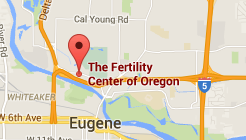What are Gonadotropins?
Follistim and Gonal-F are injectable preparations of the human pituitary hormone FSH. Pergonal, Humegon, and Repronex (Human Menopausal Gonadotropins or HMG) are medications which are a mixture of both human pituitary hormones FSH and LH. These hormones (called gonadotropins) are Follicle Stimulating Hormone (FSH) and Luteinizing Hormones (LH). FSH and LH are produced by the pituitary gland to stimulate the ovaries for the process of ovulation. HMG/FSH are usually given to women with difficult ovulation problems or as part of an advanced treatment program such as SOURCE, GIFT, or IVF.
How do they work?
HMG/FSH directly stimulate the ovaries to produce eggs. The injections are given each day until the egg capsule or follicle is mature. Careful monitoring of estrogen hormone and follicle growth is done with frequent blood tests and vaginal ultrasound examinations. When the follicles are mature, an injection of Human Chorionic Gonadotropin (HCG) is given to cause the eggs to be released from the follicles.
How successful is HMG/FSH treatment?
Studies have shown that up to 90% of women treated with these medications will ovulate and up to 60-80% of women with ovulation problems will become pregnant within six months. The pregnancy rate for ovulation problems is up to 20-25% per cycle. Pregnancy rates for SOURCE, GIFT, and IVF may be somewhat different and will vary according to the cause of infertility. About 25% of HMG/FSH pregnancies will result in spontaneous miscarriages.
What is the risk of multiple births?
HMG/FSH may stimulate more than one follicle to develop each cycle. If used correctly, and with close monitoring, the rate of multiple births is about 10-20% of pregnancies. The majority of these multiple pregnancies are twins (75%), but rarely there can be cases of triplets, quadruplets, or quintuplets that occur with this treatment. Pregnancies of three or more are associated with a significant risk of complications, pregnancy loss, and premature birth. A procedure called Multifetal Pregnancy Reduction (MPR) is now available to reduce multiple pregnancies down to twins. This technique is similar to amniocentesis for genetic studies and is an option for pregnancies of three or more.
Are there any serious complications of HMG/FSH treatment?
Any of the usual complications of pregnancy (tubal or ectopic pregnancy, miscarriage, toxemia, etc.) can occur in a HMG/FSH pregnancy. In addition, a small number of women given these medications may develop a condition known as ovarian hyperstimulation syndrome (OHSS). This condition is caused by excess enlargement of the ovaries in response to HMG/FSH. OHSS usually produces mild lower abdominal discomfort that resolves in 7-10 days without treatment. About 1% of cases can be severe and require hospital treatment. Very rare cases of severe OHSS have been reported with serious medical complications and even death. Severe OHSS is very uncommon with current techniques of blood testing and ultrasound monitoring. Conflicting studies have suggested a possible increased risk of ovarian cancer in women who reported ever using “fertility drugs” in the past and who never became pregnant. This finding has not been confirmed in other studies, and the majority of experts do not feel that the use of HMG/FSH increases the risk of cancer or related problems at this time.
What are the disadvantages of HMG/FSH treatment?
These medications are the best treatment currently available for difficult ovulation problems, but they do have disadvantages. The risks of multiple births and OHSS are discussed above. These medications are difficult to make and are expensive. The cost of medication alone can be $500-1000 or more per cycle. HMG/FSH must be given by daily injection. Blood tests for estrogen levels and ultrasound examinations may require 4-6 more visits at the office each treatment cycle.
What are the alternatives?
HMG/FSH are usually only given in cases where clomiphene (Clomid or Serophene) and other medications for infertility treatment have already failed. Adoption is often the only alternative to HMG/FSH therapy.
What will I do during HMG/FSH treatment?
We will see you for an ultrasound exam right before or on your menstrual period to make sure there are no cysts in the ovaries before we start. You will then get an injection of HMG/FSH each evening about 6:00 p.m. for 4-5 days. The injections can be given by your husband, a friend, or yourself and we will teach you how to do this. We recommend that each woman keep careful basal body temperature charts and daily weights during a treatment cycle. After 4-5 days of HMG/FSH, you will return for a blood test for estrogen and an ultrasound exam to check on the follicles. These can usually be done first thing in the morning so that you can be back to your regular activities by about 9:00 a.m. You will then continue HMG/FSH each evening and we will see you every 1-2 days until the eggs are mature. This usually requires 3-4 more visits. When the eggs are mature, an injection of HCG is given to cause the eggs to be released. We recommend that you have intercourse on the day of the HCG injection, and we will give you further instructions about insemination, GIFT, IVF, etc. at that time.

